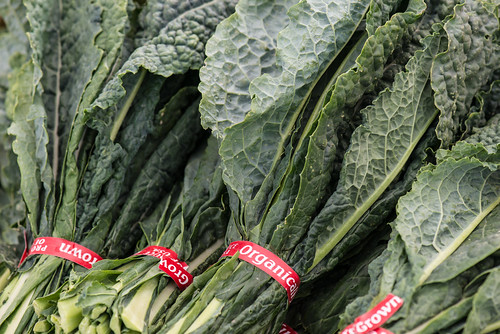
Consumers can find certified organic products at most grocery stores and demand for organic products continues to increase, with U.S. retail sales valued at more than $43 billion in 2015. Organic products are grown, raised and produced by over 31,000 certified operations, and many of those operations receive higher prices, or premiums, for their products.
Recently, USDA’s Economic Research Service (ERS) issued a report entitled Changes in Retail Organic Price Premiums from 2004 to 2010. The report highlights the retail price premium charged for organic foods compared to conventional products. For the report, ERS used a virtual shopping basket of 17 products and data collected from Nielsen scanners to calculate the organic prices and how they changed from 2004-2010.
USDA Market News – administered by USDA’s Agricultural Marketing Service (AMS) – has expanded upon this research to find current year-to-date organic prices, as well as the current prices for selected commodities using weekly advertised specials.
By using these retail advertised prices captured “at a moment in time” in the weekly National Retail Report, USDA Market News shows a current price premium for selected items and the six month average for the same items. The data allows a near-real time look at the prices from weekly advertised specials from about 330 chain groceries, with nearly 26,000 individual stores nationwide. The information is collected by AMS Market Reporters from grocery store ads.
While looking at the 2016 data for current retail advertisements, Market News found that the organic price premiums for eggs and milk were among the highest for all commodities, while salad mix was the highest among the produce items. Fresh fruits and vegetables reflected a broader range in the premium prices depending on the specific item. The prices charged for organic versus conventional products are generally higher, with organic items running higher in the advertised weekly specials in the July 1, 2016, time period. These premiums are often a reflection of consumer demand and the additional production and handling costs it takes to produce organic food.
Prices for organic products are occasionally lower than their conventional counterparts, such as red delicious apples in the June 10th period. In the report on that date, organic red delicious apples were offered at a negative premium of 20 percent under conventional red delicious apples. As expected, throughout any given year, consumers may find a seasonal gradation of price premiums for organic produce.
By publishing current prices, USDA Market News reports give organic farmers, producers and other agricultural businesses the information they need to evaluate market conditions, identify trends, make purchasing decisions, and monitor price patterns.
As consumer demand for organic food keeps growing, USDA Market News and other AMS programs – including USDA’s National Organic Program – continue to play an integral role by providing data, standards, and other resources to small producers and consumers across the country.

